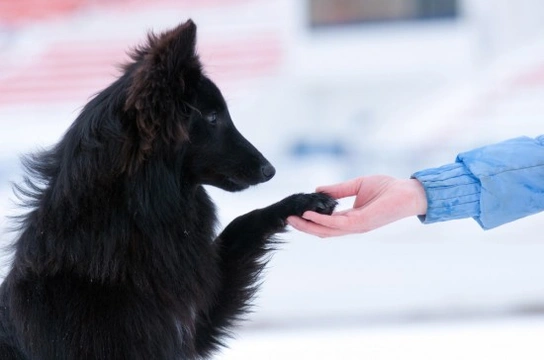
Teaching your dog tricks
“You can’t teach an old dog new tricks” so the old saying goes, but in reality, nothing could be further from the truth! Ongoing training throughout the course of your dog’s lifetime is important to keep them sharp and their minds active, and to ensure that they remain alert and responsive to you throughout their lives.Working with your dog on training exercises and building communication between you is also an important part of the bonding process between you and your dog, and something that can serve to reinforce your communication channels and help you to understand each other better.No matter how old your dog is or how large or small, the chances are that you will be able to teach him a few simple tricks to wow your friends and make people laugh. If you are not sure how to begin, read on!
Choosing a training method
As you are no doubt aware, there are many different ways of training dogs and different potential techniques that you can follow to do so. Regardless of how you decide upon and administer your commands, remember that positive reinforcement is important. Praise and reward for good behaviour, compliance with a command, or an attempt, and never punish for failure.The key to teaching a dog a trick or any other skill comes not just from getting them to follow the command, but getting them to understand the command in the first place. Your dog needs to be able to associate the words or gestures that you make with the action that you want him to perform in order to succeed. The best way to get your dog making the appropriate connections in his brain between the command, action and reward, is to bring a treat into the equation. Most dogs think with their stomachs, and they will learn and remember an action that is reinforced with a treat much more quickly than they will most other things!
Are you ready to get started?
Before you can begin or even consider teaching your dog some new skills, it is important to ensure that he is fully conversant with the old ones! Your dog will need to be reasonably well trained and responsive to simple commands (like ‘sit’ and ‘stay’) to begin with, in order to be able to pick up new commands and understand the training structure. With any luck, you will already run your dog through their basic range of commands now and then to make sure that your dog remembers them all and is following them. If you have let things slip somewhat, then you may need to spend some time reinforcing your dog’s basic commands and reminding him about the skills he already has before you can teach him any tricks!
Roll over
If your dog will roll onto his back for a belly rub, you are halfway to being able to teach them to roll over on command, and eventually to roll over several revolutions. In order to train your dog to associate current activities with a command and to perform on demand, when your dog performs the action in question voluntarily, quickly give a pre-selected command word, praise and a treat. In time, your dog will come to associate the command word and reward with the action, and will perform the sequence starting with the command word issued by you, rather than the action performed by them!
Shake hands
Teaching a dog to shake hands is relatively easy, as although your dog might not naturally wave his paws at you in the same way that he might roll over and show his belly, it is something that you can physically show your dog how to do.With your dog sitting on his haunches, lift one of his paws and gently shake it for a second, using the command word ‘shake hands!’ (or a similar command of your choice) before praising and giving a treat. Most dogs pick this one up surprisingly quickly! Similarly, teaching your dog to wave goodbye is also pretty simple.
Spin
Teaching your dog to spin in circles is one of those tricks that looks quite impressive, but is also amongst the easier techniques to teach. You may even be able to teach your dog to spin to the left or the right upon command! To teach your dog to spin, use a hand along the bulk of their body to direct them and use a treat in your other hand to draw attention, moving the treat to that they follow it into a circular pattern. Do not withhold the treat for long- one revolution is enough to begin with. Use the command word and praise alongside of this, so that eventually your dog will perform without the treat!
Backing up
Teaching your dog to reverse is not only fun, but can be useful in some situations! As with many other tricks, backing up is something that you will need to physically show your dog how to do and move him into the position that you want him to be in for the trick, all the while reinforcing with the command word, praise and a treat.It is important when trying to teach your dog to back up that you keep it fun for them, and don’t invade their personal space or inadvertently intimidate them when you do so.Trick training tips to remember :
- Keep things fun- if your dog is becoming tired, losing interest or getting frustrated because they don’t know what you want, end with a few minutes of play and go back to training for tricks another day.
- Never punish your dog for failure- reward for compliance.
- Make sure that your dog understands your commands, and knows what you are asking of them. Being able to tell a lack of understanding from basic disobedience is one of the core skills involved in training, for tricks as well as endeavours that are more serious.
Have fun!



